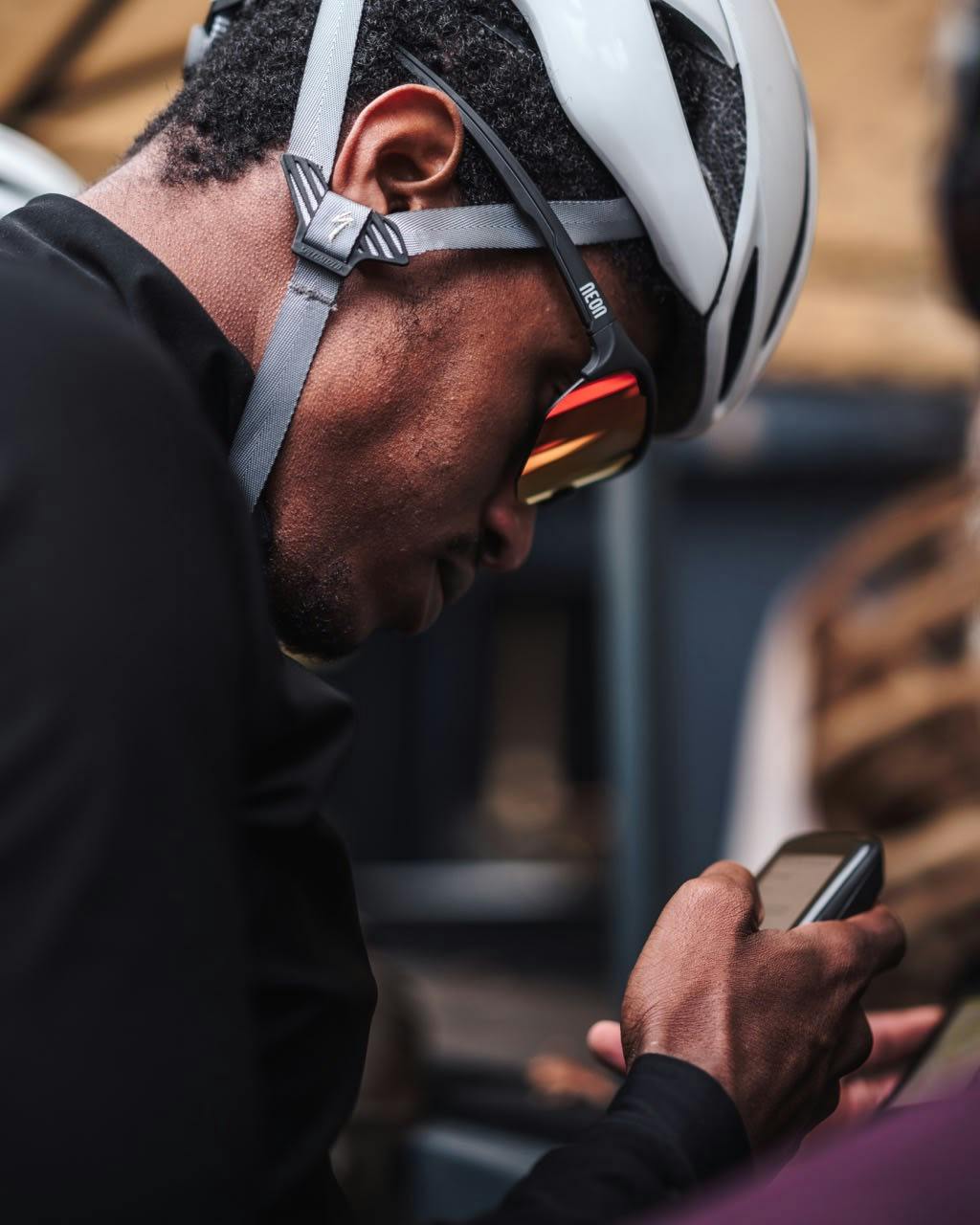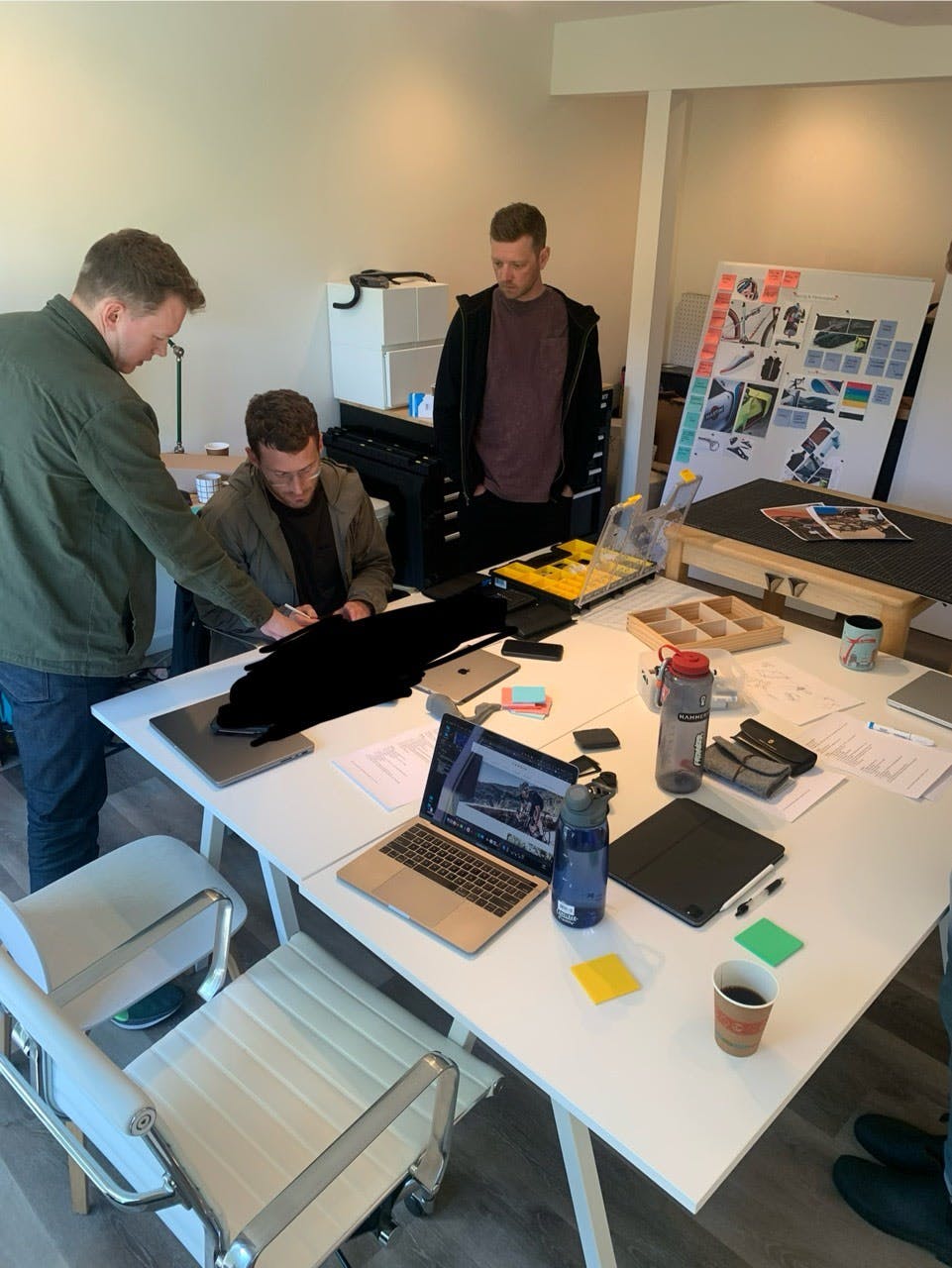
Karoo 2
Rethinking the Bike Computer
The Karoo 2 is a cycling computer first released in 2020, aimed at disrupting the then-stagnant bike GPS market. Before Karoo, navigation by head unit (bike GPS) was finicky. The devices were difficult to use. Getting off track meant stopping, analyzing, and re-engineering your route. When riders built routes, they had to study the map, making sure everything was in their head for the inevitable navigation failure. Sometimes it was necessary to stick a print out in their back pocket. We aimed to get rid of that behavior.
The vision for the Karoo 2 was to bring principles of modern smartphone technology and UX into the cycling computer. Our first foray into the head unit space was with the original Karoo, built upon Android. Our experiences there helped us scale hardware and software, and our learnings led to the second generation– one jumping leaps and bounds above our predecessors. By doing so, we challenged the likes of Garmin and Wahoo.
My journey with this product, from its conceptual phase through to its acquisition by SRAM LLC, reflects a blend of innovative design, user-centric research, and interdisciplinary collaboration. Karoo 2 proved to be the product that matured Hammerhead from attracting early-adopters into an industry threat. Since the release, we’ve become the head unit of choice for 3 UCI World-Tour teams competing in the Tour de France. As of 2023, we’ve been the operating system of over 4M+ rides by 65k+ riders. Karoo 2 led to our eventual acquisition by SRAM, LLC in January of 2022.
From Design Iteration to Product Strategy
My role began with a deep dive into refining the Android-based Karoo 2 operating system. This task was about more than just technical improvements; it involved rethinking how cyclists interact with technology, ensuring our GPS device was as intuitive as it was functional. I focused on aligning the design closely with real-world use, ensuring that every feature resonated with our riders' needs and habits.
As the project evolved, so did my responsibilities. I found myself at the forefront of critical feature development, collaborating with major third-party companies like Strava and TrainerRoad. These weren't just partnerships; they were opportunities to integrate Karoo 2 deeply into the cycling community. A highlight of my work was creating the “CLIMBER Without a Route” feature, a significant innovation that allowed riders to explore without predefined routes. Read more about how we came to invent this patent-pending product innovation→. This feature not only advanced our technological capabilities but also directly catered to the cyclists' desire for freedom and adventure.
A key aspect of my role involved establishing and managing a robust user research framework. I led the efforts to build a comprehensive research repository, conducting extensive user interviews and usability tests. This groundwork ensured that our design decisions were consistently informed by real user feedback and needs, allowing us to keep the product relevant and ahead of the curve.
Post-acquisition by SRAM LLC, my role took on a new level of significance. I became instrumental in integrating our team and processes with the new organizational structure. This period was about sharing knowledge, harmonizing design systems, and ensuring a seamless transition into a unified product vision. Read my deck I used to teach my research process solving a complex IA problem→ It was a time marked by learning and collaboration, strengthening my skills in both design leadership and cross-functional teamwork.
Evolution of the Product Development Process
At Hammerhead Navigation, the development journey of Karoo 2 was marked by an adaptive and evolving design process, crucial in shaping a product that resonated with the dynamic world of cycling.
Setting the Stage for Continuous Improvement
Our initial focus was to create a solid foundation using the Android 8 platform, but we quickly recognized the necessity of a responsive and agile approach. To achieve this, we committed to a bi-weekly update schedule, a strategy that was essential in keeping our development agile and aligned with user needs. An example of this was adapting the device for varied and often harsh cycling environments. This meant ensuring readability in bright sunlight, responsiveness in wet conditions, and durability across rough terrains. Read about how I used game controllers to rethink our software-hardware interface→
User-Centric Approach in Design
Central to our process was a deep commitment to understanding and incorporating cyclist feedback. This user-centric approach meant that each design iteration was informed by real-world experiences and feedback. By continuously folding in user insights, we ensured that each update brought meaningful improvements and new features to enhance the cycling experience. See how I gave riders recall tests to improve situational awareness→

Collaborative Efforts and Rapid Development
Collaboration across our teams was key to this approach. Designers, engineers, and product managers worked closely together, ensuring that our rapid development cycles led to high-quality and impactful updates. This synergy allowed us to quickly prototype, test, and refine ideas, turning them into tangible features that riders could experience and benefit from in real time. Read about a cross-team, high-output ideation workshop I ran→
The Result: A Continually Evolving Product
This approach to design and development led to significant advancements in Karoo 2. Innovations such as the “CLIMBER Without a Route” feature and enhanced route management systems were direct results of this evolving process. Our commitment to regular updates meant that Karoo 2 was not just a static product but a dynamic solution that grew and improved, mirroring the evolving needs of cyclists.
Impact & Awards
The success and influence of Karoo 2 in the world of cycling technology are best illustrated by its remarkable usage statistics and the array of accolades it has received. Under my tenure, the device recorded over 4.5 million unique bike rides from more than 65,000 cyclists, collectively covering an astounding 207 million kilometers. These figures are more than mere numbers; they represent a paradigm shift in how cyclists interact with GPS technology, emphasizing the device's reliability, user-friendliness, and innovative features.
In addition to its widespread user adoption, Karoo 2 has been recognized by leading authorities in the cycling community:
- WIRED ‘Pick’
- Bicycling Magazine Editor’s Choice
- Cycling News ‘Gear of the Year’
- ”What's clear is that Hammerhead is a force in the bike computer market.” - off.road.cc
- “simply the best on the market” - The Independent
- “a game-changing upgrade” - Triathlete Magazine
- “Excellent usability” - techradar.com
Growth & Leadership
Throughout the Karoo 2 project at Hammerhead Navigation, my professional journey was one of significant growth, evolving from focused design and technical roles to one of strategic importance. This shift saw me leading collaborations with key partners, mentoring a growing team, and navigating complex challenges, especially during the integration following SRAM LLC's acquisition. This period not only honed my skills in user-centric design and technology but also in guiding teams through change, reinforcing my capabilities in strategic planning and organizational leadership, and preparing me for future challenges in tech product development.
Learnings & Mis-steps
An impactful learning was the critical role of structured processes in managing user feedback. In the early stages, we struggled to focus effectively, often allocating resources to features of lesser impact due to the overwhelming influx of user feedback. The breakthrough came with the implementation of a systematic approach to analyze and prioritize this feedback. This method allowed us to sift through the noise, identifying the most valuable insights and directing our efforts towards features that genuinely enhanced user experience. It was a powerful lesson in the importance of discerning and acting on key user input to drive product relevance and success.
However, the most significant insight emerged from our interaction with the engineering team. Initially, we faced challenges due to a lack of frequent and open communication with our engineers, which increased the risk of misalignment and inefficiency in our projects. Similarly, sporadic communication with users sometimes led us down paths that required us to discard significant work later. We learned this the hard way, and it led to a fundamental shift in our approach. We started involving key engineering team members right from the early stages of research and ideation. This change in strategy meant that impractical ideas were discarded early on, allowing us to focus on concepts that were not only impactful but also feasible. This approach reinforced the value of regular, transparent communication with both our engineering team and users, ensuring a more streamlined and effective development process.
Coworker Testimonials
"Hunter's unique ability to understand and approach user problems both quantitatively and qualitatively has been invaluable. His in-depth user research and analytical mindset have led to groundbreaking product performance. His grasp of the complex sports IoT landscape and his user-first approach have resulted in seamless, user-friendly solutions. Hunter's UX and UI design skills are exceptional, contributing significantly to our product's success. He is a standout professional, whose profound industry knowledge and design skills make him an invaluable asset to any team."
Steve Winchell, Design Manager, SRAM, LLC (formerly Lead Product Designer, Hammerhead)
"Hunter is an impressively talented and driven problem solver, skilled at distilling user feedback into intuitive and elegant designs. His ability to simplify complex information into user-friendly designs is remarkable. He challenges traditional approaches, innovating and automating workflows, and effectively collaborates with cross-functional teams, especially in hardware-centric problem-solving. Hunter's skills in software design and his adaptability make him highly recommended for any complex problem-solving role."
Brian Fosler, Hardware Product Manager, Hammerhead / SRAM, LLC
"Hunter stands out as a multidisciplinary talent, excelling in everything from detailed design to overarching research. His sensibilities extend even to the physical aspects of design, and he remains on the forefront of design trends. His contributions have been pivotal to the Hammerhead team, and his diverse skill set makes him a valuable addition to any design team, regardless of the industry."
Aidan Doan, Industrial Designer, Hammerhead / SRAM, LLC
Reflection
Writing about my time with the Karoo 2 project, I see it as a pivotal chapter in my career. It was more than developing a product; it was a journey of personal growth and learning. The challenges faced and successes achieved with Karoo 2 have deeply shaped my approach to design and collaboration. This experience has not only left a lasting impact on the product but also on me as a professional, readying me for the next step in my journey.
Collaborators
Steve Winchell mentored me as Hammerhead's Lead Product Designer
Will Tribble PM
Grayson Pollock PM
Aidan Doan Industrial Designer
Evan Huggins Director of Hardware Design



















